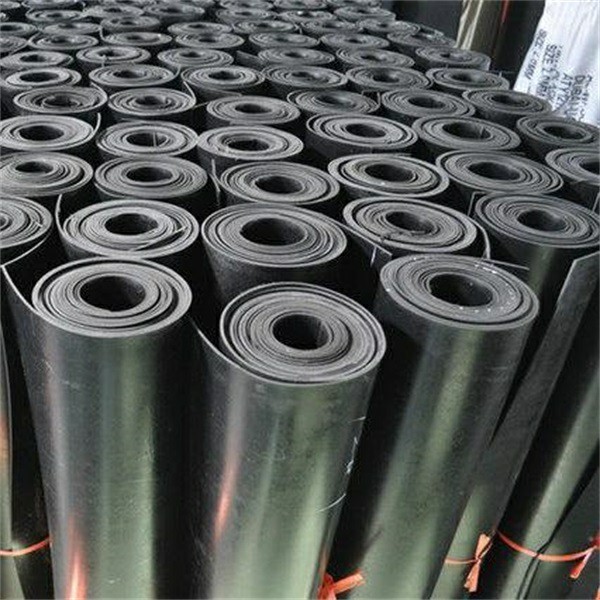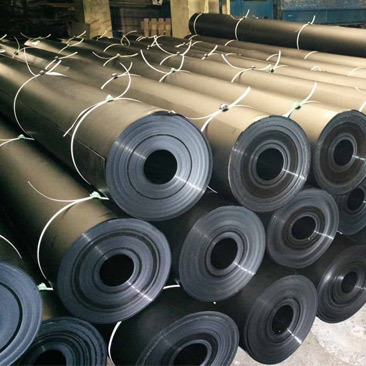Understanding Geomembrane Material: Essential Insights for Construction Projects
Release time:
2025-10-07
Geomembrane materials play a crucial role in various applications within the construction industry, particularly in projects that require reliable containment and separation solutions. These synthetic membranes are primarily used to control fluid movement in a variety of environmental conditions, making them essential for effective water management, waste containment, and environmental protection.
Geomembrane materials play a crucial role in various applications within the construction industry, particularly in projects that require reliable containment and separation solutions. These synthetic membranes are primarily used to control fluid movement in a variety of environmental conditions, making them essential for effective water management, waste containment, and environmental protection.
One of the primary benefits of geomembranes is their impermeability. They serve as barriers to prevent liquids from passing through, ensuring that contaminants do not leach into surrounding soils or groundwater. This characteristic is vital for landfill liners, pond liners, and containment areas for hazardous materials. By utilizing geomembrane materials, construction projects can greatly reduce environmental risks and adhere to regulatory standards.
In addition to their impermeable qualities, geomembranes are also known for their durability and resistance to various environmental factors. They are engineered to withstand the stresses of temperature fluctuations, UV radiation, and chemical exposure, which makes them suitable for long-term applications. This durability translates into lower maintenance costs and increased longevity for projects, providing a more sustainable solution when compared to traditional methods.
When selecting geomembrane materials for a specific project, it is essential to consider several key factors. First, the type of application will dictate the necessary specifications. For instance, projects involving potable water containment may require geomembranes that meet stringent health and safety standards, while those used in industrial applications might prioritize resistance to chemicals.
Thickness is another important consideration. Different projects may require varying thicknesses of geomembranes to ensure effective performance under specific loads and pressures. Additionally, the installation method should be assessed, as some geomembranes are designed for simple deployment, while others may necessitate more complex installation techniques.
Another factor to consider is the environmental impact of geomembrane materials. As sustainability becomes increasingly important in all sectors, it is worth exploring options that utilize recycled materials or are recyclable themselves. This not only reduces the carbon footprint of a project but also contributes to a more circular economy in the construction industry.
In conclusion, geomembrane materials are vital components in construction that offer reliable solutions for fluid containment and environmental protection. Their durability, impermeability, and adaptability to various applications make them indispensable for modern construction practices. By understanding the key characteristics and selection criteria for geomembranes, construction professionals can enhance project outcomes while ensuring compliance with environmental regulations.
One of the primary benefits of geomembranes is their impermeability. They serve as barriers to prevent liquids from passing through, ensuring that contaminants do not leach into surrounding soils or groundwater. This characteristic is vital for landfill liners, pond liners, and containment areas for hazardous materials. By utilizing geomembrane materials, construction projects can greatly reduce environmental risks and adhere to regulatory standards.
In addition to their impermeable qualities, geomembranes are also known for their durability and resistance to various environmental factors. They are engineered to withstand the stresses of temperature fluctuations, UV radiation, and chemical exposure, which makes them suitable for long-term applications. This durability translates into lower maintenance costs and increased longevity for projects, providing a more sustainable solution when compared to traditional methods.
When selecting geomembrane materials for a specific project, it is essential to consider several key factors. First, the type of application will dictate the necessary specifications. For instance, projects involving potable water containment may require geomembranes that meet stringent health and safety standards, while those used in industrial applications might prioritize resistance to chemicals.
Thickness is another important consideration. Different projects may require varying thicknesses of geomembranes to ensure effective performance under specific loads and pressures. Additionally, the installation method should be assessed, as some geomembranes are designed for simple deployment, while others may necessitate more complex installation techniques.
Another factor to consider is the environmental impact of geomembrane materials. As sustainability becomes increasingly important in all sectors, it is worth exploring options that utilize recycled materials or are recyclable themselves. This not only reduces the carbon footprint of a project but also contributes to a more circular economy in the construction industry.
In conclusion, geomembrane materials are vital components in construction that offer reliable solutions for fluid containment and environmental protection. Their durability, impermeability, and adaptability to various applications make them indispensable for modern construction practices. By understanding the key characteristics and selection criteria for geomembranes, construction professionals can enhance project outcomes while ensuring compliance with environmental regulations.






